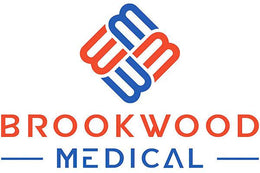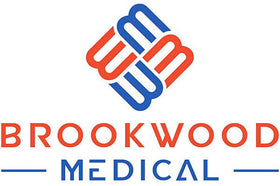Face Masks: Their Evolution Through the Pandemic

Frequently Asked Questions
1. What role did face masks play during the COVID-19 pandemic?
2. What are the different types of face masks mentioned in the article?
3. Why are safe face masks for kids important?
4. How have face masks transformed throughout the pandemic?
5. What is the future outlook for face masks according to the article?
The COVID-19 pandemic has drastically changed our world and the way we interact with it. One of the most visible changes has been the widespread adoption of face masks. From their inception as a health precaution to their current role as fashion accessories, face masks have evolved significantly. This article will explore the development of face masks throughout the pandemic, focusing on their importance, variety, and safety, particularly when it comes to safe face masks for kids.
The Beginning of the Mask Era
When COVID-19 first emerged, face masks quickly became a focal point in public health discussions. Initially, the emphasis was on their role in preventing virus transmission. It became clear that wearing face masks was essential to limiting the spread of the virus, especially in crowded or enclosed spaces. The Centers for Disease Control and Prevention (CDC) and other health organizations recommended masks as a simple yet effective means of protection.
Different Types of Masks: A Growing Variety
As the pandemic continued, the types of masks available on the market grew increasingly diverse. Here’s a look at some common categories:
Medical Masks
Medical masks, including surgical masks and N95 respirators, were in high demand at the pandemic's onset. These masks are designed for healthcare settings and provide a high level of filtration to protect both the wearer and those around them. However, the need for masks surged globally, leading to shortages and a subsequent push for alternatives.
Homemade Masks
In response to the shortages, many individuals began making their own masks. Using fabric and various DIY materials, homemade masks emerged as a popular option. While they may not offer the same level of protection as medical-grade masks, they still serve an important purpose, especially when made with multiple layers. Many patterns are available online, allowing for creativity while promoting safety.
The Fashion Revolution
As the pandemic progressed, face masks became more than just health tools; they evolved into a fashion statement. Various brands began producing aesthetically pleasing masks, incorporating colors, patterns, and even designs featuring popular characters or themes. This trend allowed people to express their individuality while adhering to safety measures.
Comfort Meets Style
The rise of fashion masks also led to innovations in comfort. Many designers began to focus on breathable fabrics and adjustable ear straps, aiming to ensure masks can be worn comfortably for extended periods. This was particularly crucial as kids returned to school, necessitating the production and availability of safe face masks for kids that are both functional and visually appealing.
The Importance of Safe Face Masks for Kids
As schools reopened and social activities resumed, the need for safe face masks for kids became even more critical. Here's why they matter:
- Protection Against COVID-19: Kids are not immune to the virus, and wearing masks helps to protect them and others, especially when social distancing is not feasible.
- Encouraging Responsibility: Teaching children to wear masks instills a sense of responsibility and understanding of community health—important lessons in today’s world.
- Social Acceptance: As face masks became a part of daily life, using fun and stylish designs for kids helps them feel more accepted among peers.
Adapting to the New Normal
With continual developments in our understanding of COVID-19 and its variants, the role of masks is still evolving. Experts recommend adjusting mask-wearing guidelines based on vaccination rates, community transmission levels, and other factors. The pandemic has encouraged innovation, leading to the development of improved mask technologies and fabrics, ensuring ongoing protection.
Future Technologies
As we move forward, the marketplace is likely to see smarter, high-tech masks that can provide real-time information such as air quality and viruses present in the environment. This progression will further enhance the efficacy of safe face masks for kids and adults alike.
The Role of Face Masks in Specified Settings
The use of face masks varies significantly based on location and activity. Here are some considerations:
Indoor Settings
In enclosed spaces such as classrooms, offices, and public transportation, face masks remain an essential protective measure. Ensuring that children have safe face masks for kids is especially important in these environments where transmission risk is higher.
Outdoor Gatherings
While outdoor activities generally carry less risk for transmission, many public events still encourage mask usage, especially when social distancing isn’t possible. Masks can promote a safer atmosphere for both adults and children, ensuring that everyone feels comfortable and secure.
The Psychological Aspect of Face Masks
Beyond physical protection, face masks also have a psychological impact. They can create feelings of safety and allow individuals to engage more freely in social settings. However, they can also cause anxiety and discomfort for some children. Parents should balance safety with sensitivity, ensuring kids understand the reasons for wearing masks while also addressing any concerns they may have.
Mask Up with Confidence
As face masks have evolved, so has our understanding of their importance in public health. Whether you're looking for a breathable mask for yourself or a stylish option for your child, it's crucial to prioritize safety without sacrificing comfort or style. Masks will likely remain a staple in our daily lives for the foreseeable future.
The Path Ahead
Looking forward, the conversation around face masks will continue. We see heightened awareness about respiratory illnesses, hygiene practices, and personal responsibility. As we adapt to this new normal, embracing innovations in mask design and education will be key in maintaining health and safety for everyone.
Step into the Future of Safe Masks!
The pandemic has significantly impacted how we view face masks, transforming them from mere necessity to essential fashion items. As a society, we must continue to prioritize health and safety. By providing children with safe face masks for kids, we are not only protecting their health but also empowering them. Let's embrace this journey together, ensuring that our future is both safe and stylish!






